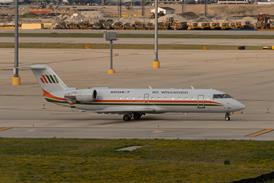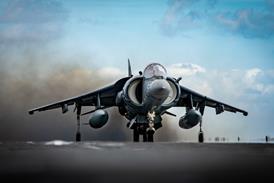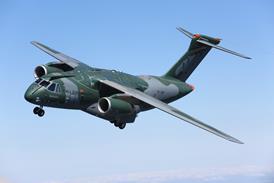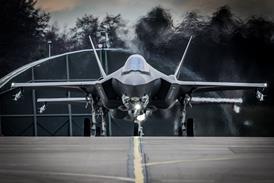The US Army is moving fast to revitalise a neglected need to install a new generation of survivability equipment on a force of helicopters shaken by shootdowns in Iraq. Since 2002, funding for the army's main active jammer development project has been kept alive only by congressional add-ons to the Pentagon's budget request. Events in Iraq since late October 2003, however, have made active and passive countermeasures for helicopters the lead procurement priority.
The army cites hostile fire as the cause of nine helicopter crashes that killed 52 soldiers. News reports have cited hostile fire in at least two other incidents. One Boeing AH-64D Apache Longbow was shot down during the war on 23 March 2003, and its two crew members were rescued. Another Apache was shot down nearly three months later in western Iraq, the first known crash linked to Iraqi insurgents.
In a 21-day period beginning on 25 October, Iraqi insurgents are believed to have shot down six US Army helicopters, including four Sikorsky UH-60 Black Hawks, one Boeing CH-47 Chinook and one Bell OH-58 Kiowa Warrior. Five of the attacks involved rocket propelled grenades (RPG), but a single attack using a man portable air defence system (manpads) may have had the greatest impact on the army leadership. On 2 November, an Army National Guard Chinook carrying 42 troops was shot down near Fallujah by insurgents with manpads, perhaps an SA-7 or SA-14, killing 16 people and injuring a further 26.
Within three weeks, secretary of the US Army Les Brownlee had elevated active self-protection systems to the service's top acquisition priority, and hastily approved low-rate initial production of the BAE Systems Advanced Threat Infrared Countermeasures (ATIRCM)/Common Missile Warning System (CMWS). Components of ATIRCM, including a multi-band laser jammer, are still in development, but the CMWS is being introduced first. Meanwhile, the army is working to replace ageing M-130 chaff and flare dispensers under a $28 million package added in January to the fiscal year 2004 defence budget.
"The ATIRCM programme is dependent on some technology with a multi-band laser that is being worked on, and we hope it comes to fruition very soon," Brownlee told the House Armed Services Committee on 26 February. "In the meanwhile, we're going ahead and wiring aircraft in advance to take the CMWS."
Five more army helicopters crashed after the initial incidents, but only two have been firmly linked to hostile fire. The last confirmed attack downed an Apache helicopter on 13 January.
However, the greatest danger to helicopters continues to come from RPGs and small arms fire. Army experts are surveying new technologies that might be used to defeat RPGs aimed at helicopters. The study includes passive countermeasures, such as lighter and more effective ballistic blankets, and active systems that in theory could detect, track and destroy an incoming RPG.
Industry officials close to the panel say a "silver bullet" solution has not been found to the RPG threat, but a range of medium- and long-term projects are being launched with new army funding. Boeing's director of advanced rotorcraft systems Waldo Carmona says one of the more promising concepts is an acoustic tracking system that can pinpoint the source of the first shot fired at an aircraft, perhaps triggering an automatic onboard gun for a "revenge kill".
Meanwhile, US Special Operations Command is seeking suppliers of a helicopter gunfire detection system. Requirements call for the "ability to detect and potentially locate incoming gunfire from small and medium calibre weapons", and "operational environments include hovering to cruise at low- to medium-altitudes".
A long-term problem is stopping the first shot. An onboard intercept system that can be fired at incoming RPGs is problematic because the grenade shatters into fragments that continue on roughly the same ballistic trajectory originally aimed at the helicopter. Experiments on land vehicles involving air bag shields that can deflect RPGs have been deemed unsuitable.
Source: Flight International























